Last updated on
Discover the timeless charm of traditional Japanese homes, and learn how to incorporate these serene design elements into your own living space.
Alright, let’s take a trip back in time, but with a twist! Traditional Japanese houses are an absolute marvel with their tatami mats, shoji screens, and tranquil gardens. But let’s not just stroll down the well-worn path.
I’m here to jazz things up with some fresh, out-of-the-zen-garden ideas that will make you see these homes from a whole new angle. Ready to explore the unexpected in the serene world of Japanese architecture? Buckle up your kimono and let’s dive in!
Tatami Room
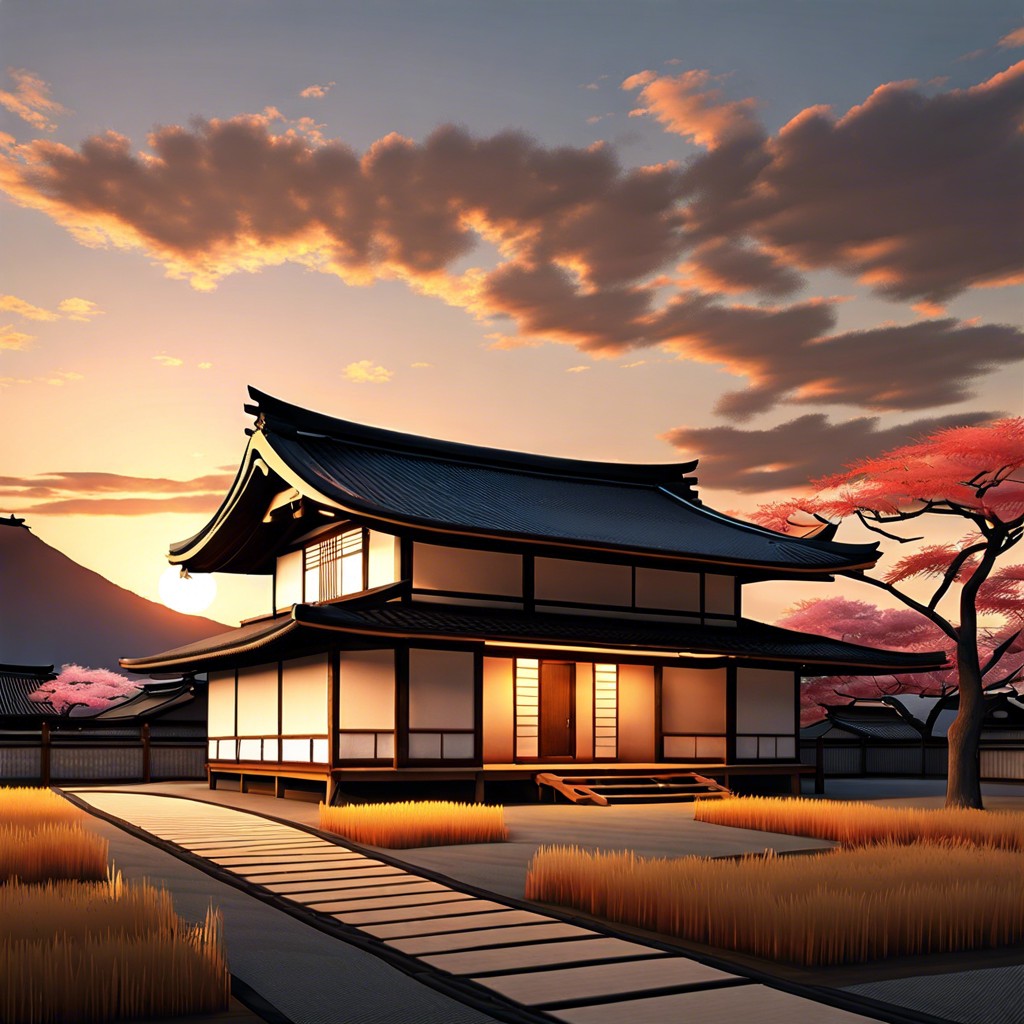
Tatami rooms are traditional Japanese living spaces with flooring made of woven straw mats, providing a cozy and comfortable atmosphere. The tatami mats add a unique and authentic touch to the house, making the room perfect for relaxation and meditation.
Shoji Screens
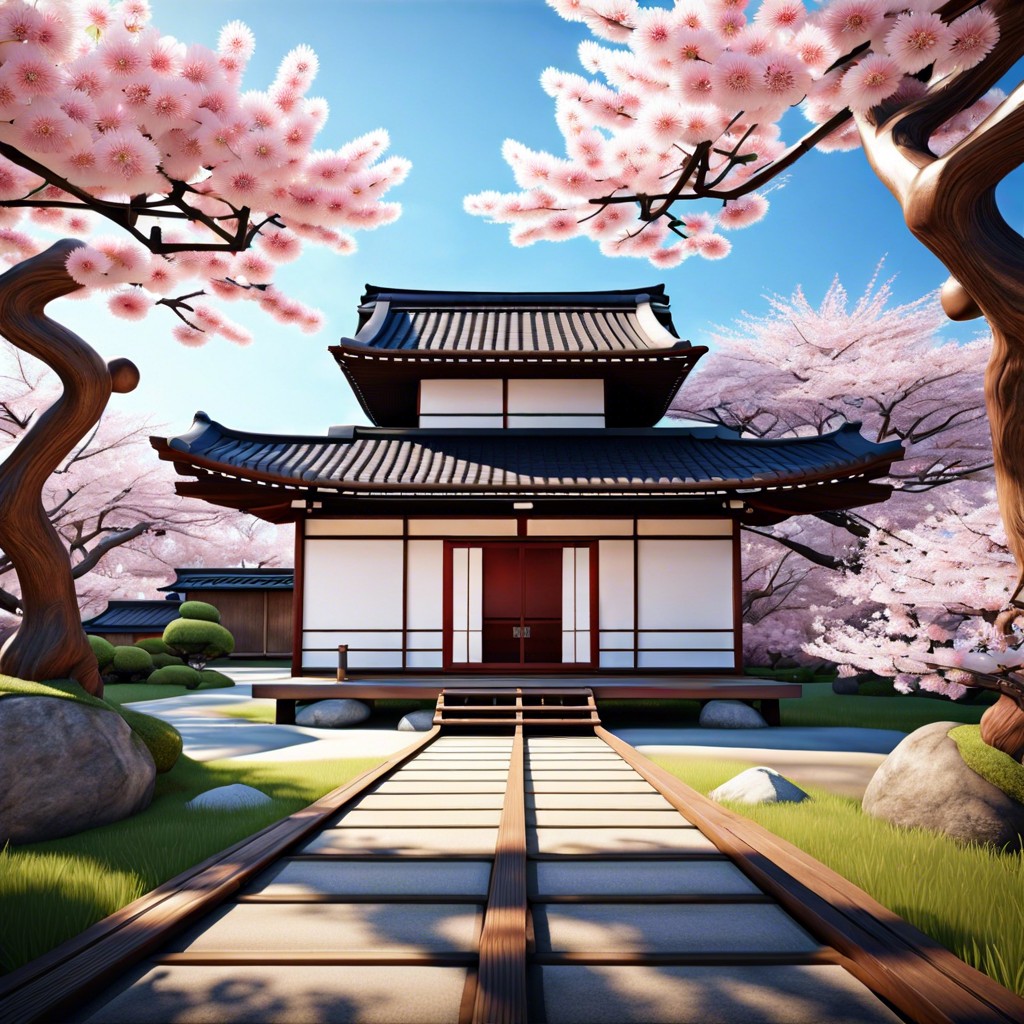
Shoji screens are traditional Japanese room dividers made of translucent paper over wooden frames. They allow soft, diffused light to filter through, creating a peaceful and serene atmosphere in the room.
Sliding Doors (fusuma)
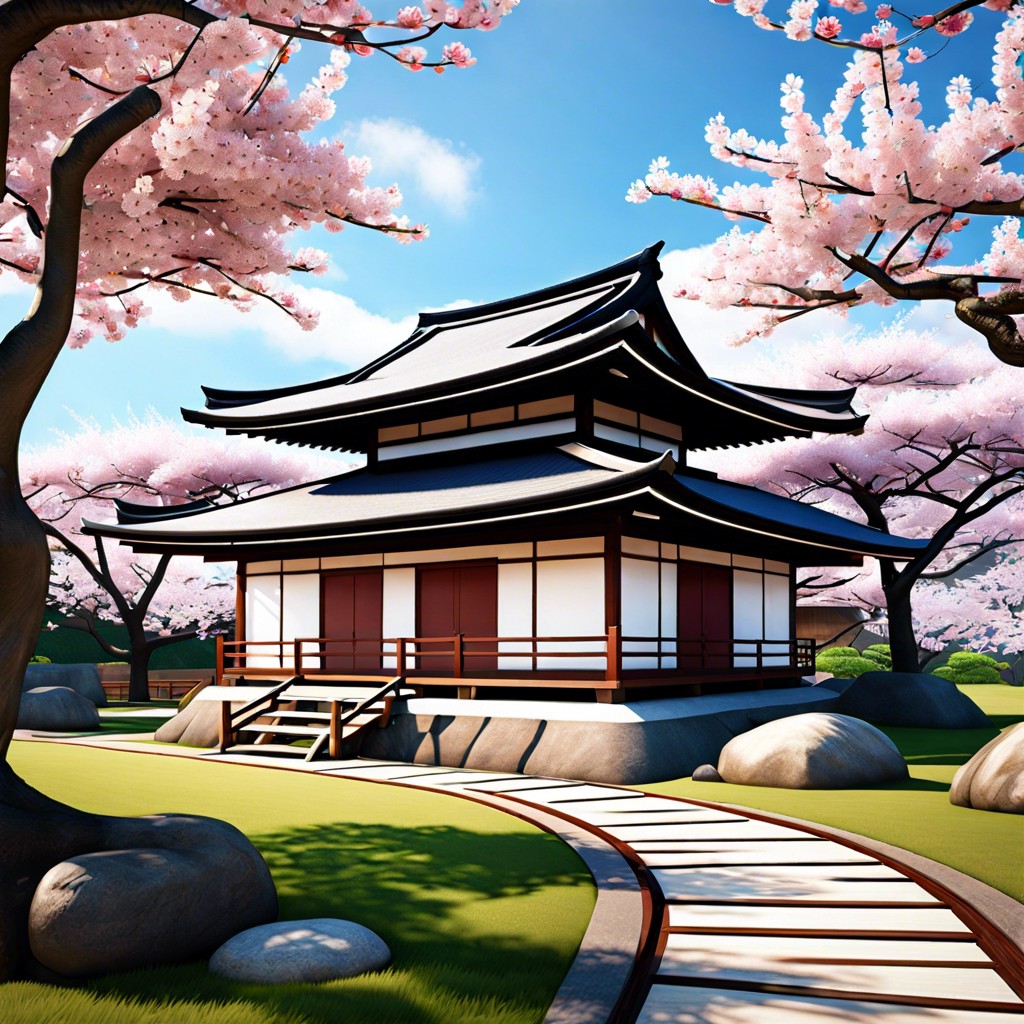
Sliding doors, known as fusuma, are elegant partitions used to divide spaces in a traditional Japanese house. They serve as flexible room dividers and can be easily opened or closed to adjust the layout of the living areas.
Engawa (veranda)

Engawa in traditional Japanese houses refers to the narrow wooden veranda that runs along the outside of the home. It serves as a transition space between the inside and outside, offering a place to relax and enjoy the view of the garden.
Tsubo-niwa (courtyard Garden)
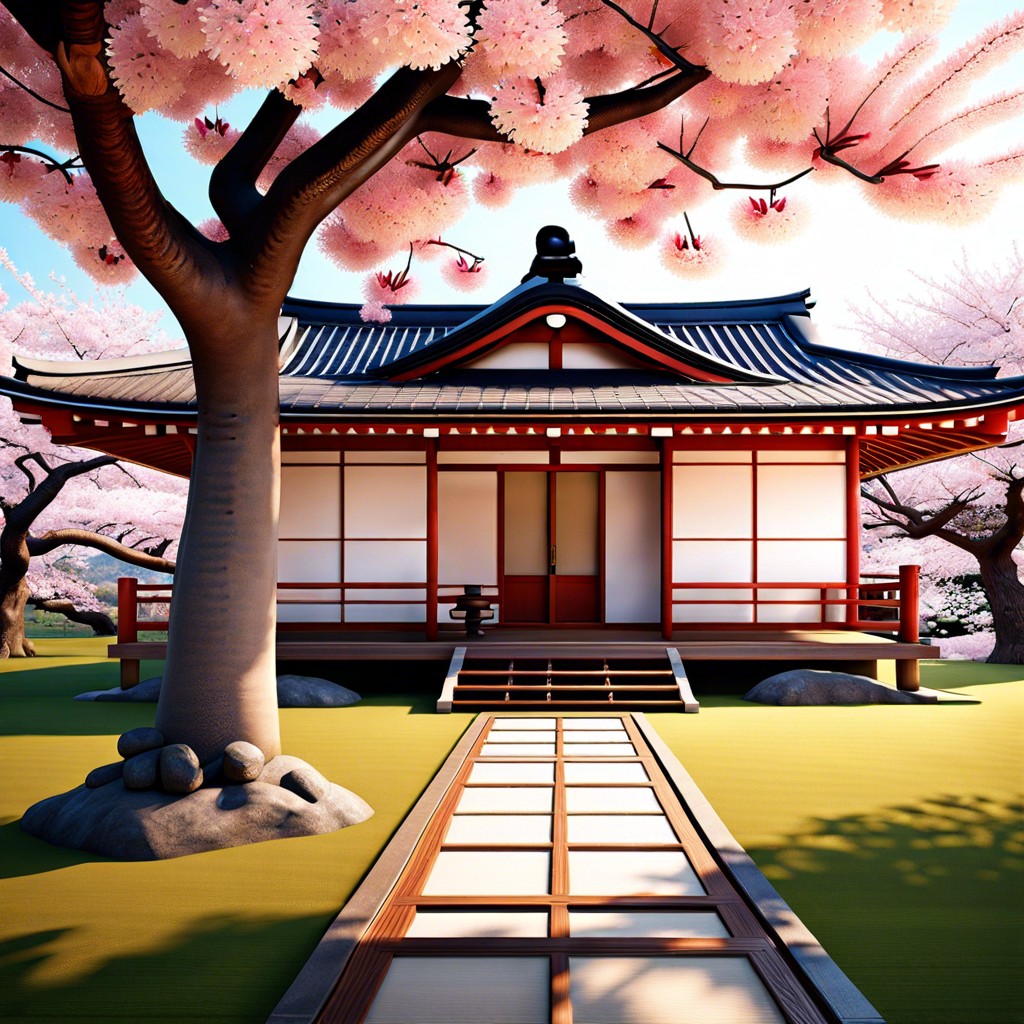
Tsubo-niwa, the traditional Japanese courtyard garden, is a small, tranquil outdoor space typically found at the center of a home, bringing a touch of nature and serenity into the living environment. Decorated with carefully arranged plants, stones, and water features, the Tsubo-niwa provides a peaceful retreat and a visual connection to the outdoors within the confines of the house.
Tokonoma (alcove)
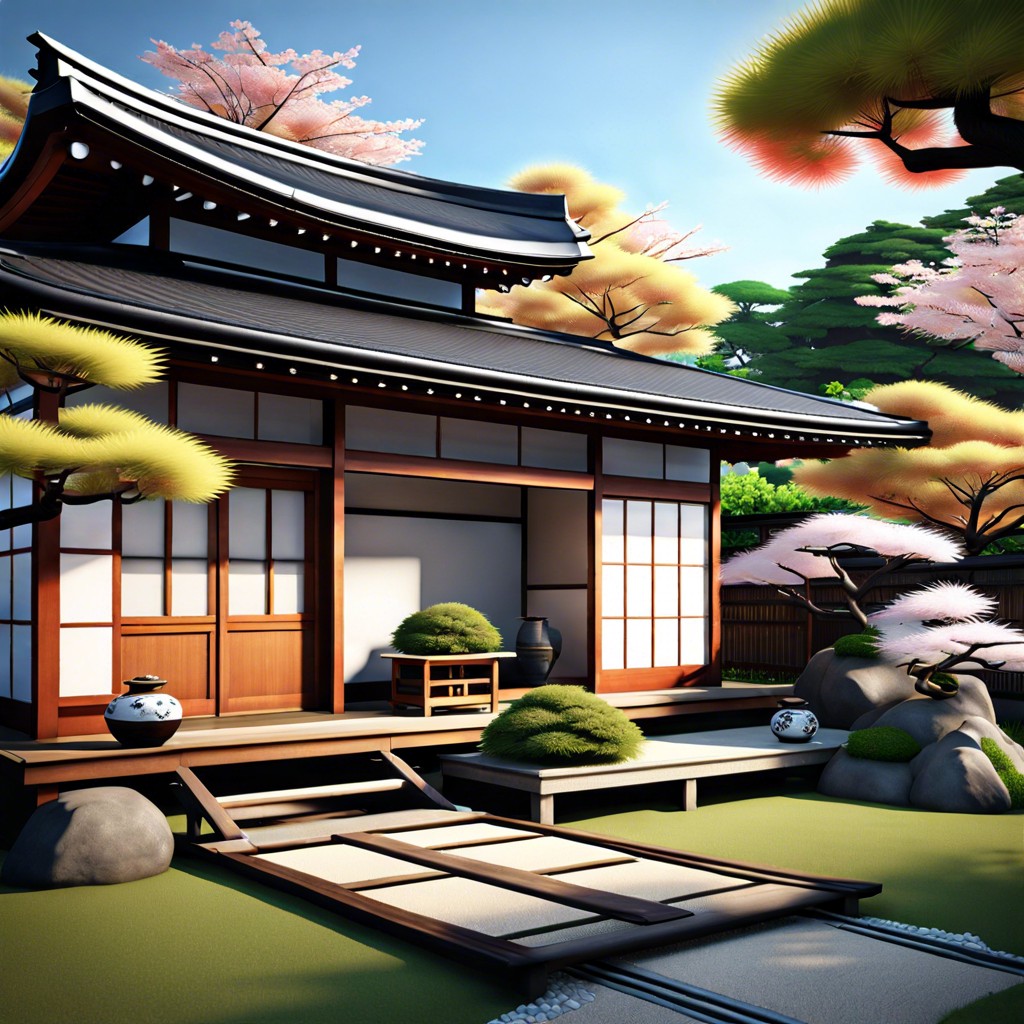
Tokonoma is a small raised alcove in a traditional Japanese house used for displaying artwork and seasonal decorations. It serves as a focal point for the room.
Wooden Lattice Windows
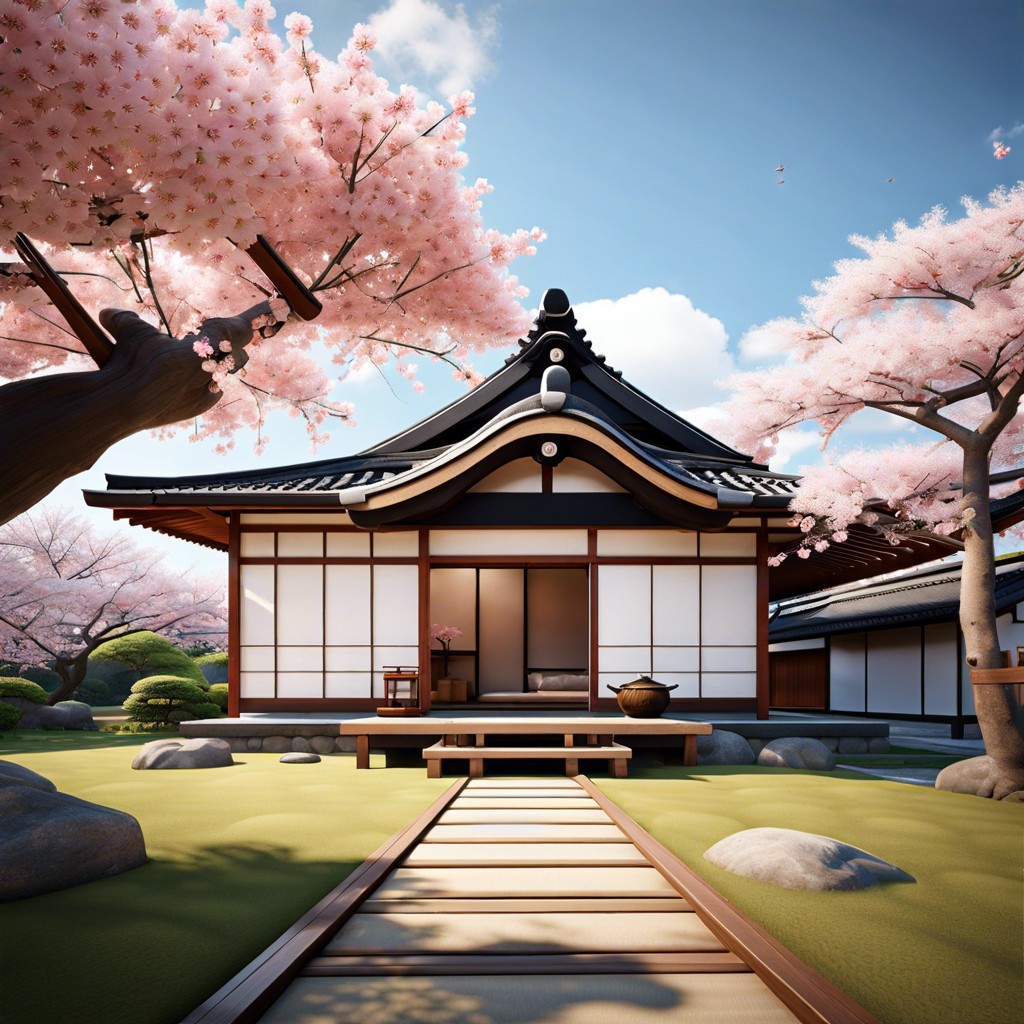
Wooden lattice windows in traditional Japanese houses serve as decorative elements that allow natural light to filter into the rooms while offering privacy. These windows add a touch of elegance and charm to the overall design of the house.
Genkan (entryway)

The Genkan is the traditional Japanese entryway where shoes are removed before stepping inside. It serves as a transition space between the outside and the home.
Chabudai Table
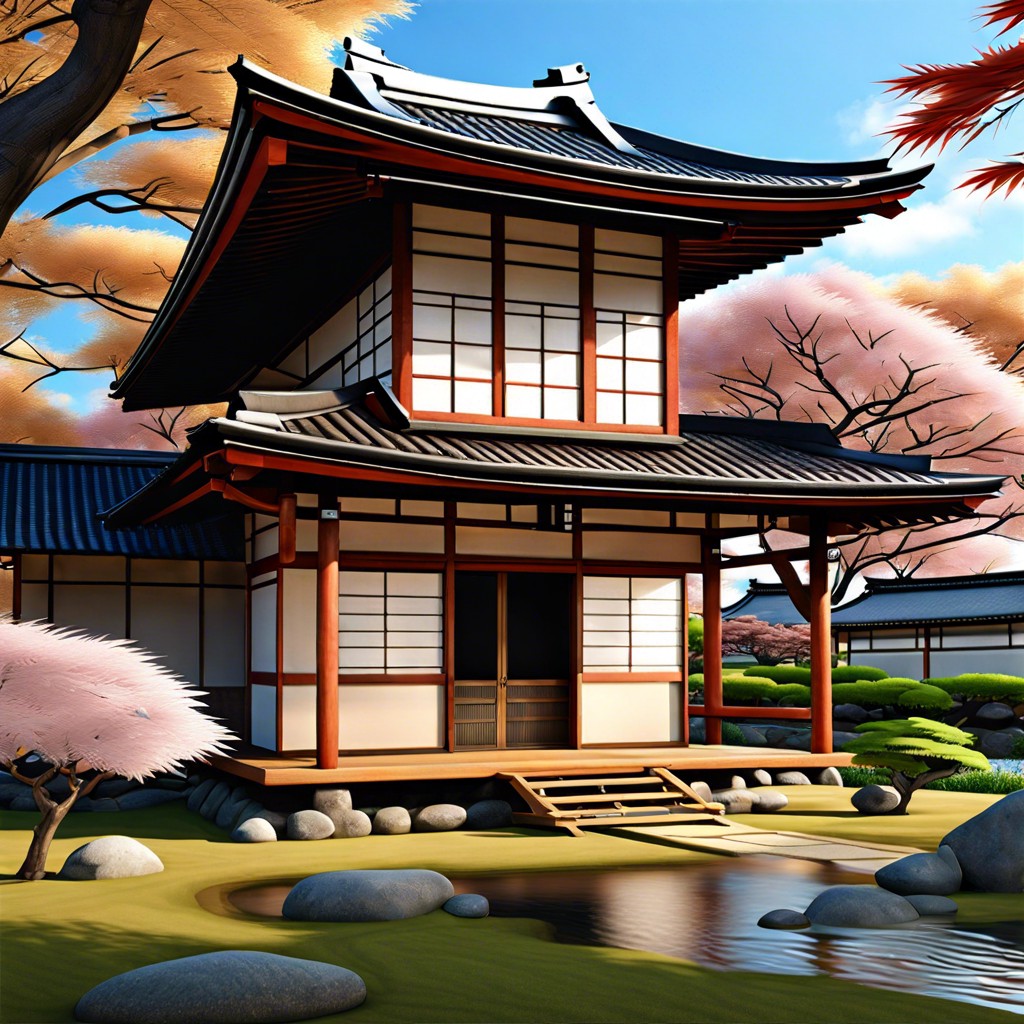
Chabudai tables are low dining tables used in traditional Japanese houses. They promote a close-knit dining experience with family and guests.
Irori (sunken Hearth)

The Irori, or sunken hearth, served as the center of warmth and food preparation in traditional Japanese homes. Families gathered around it for cooking and keeping cozy during colder seasons.
Washitsu (Japanese-style Room)
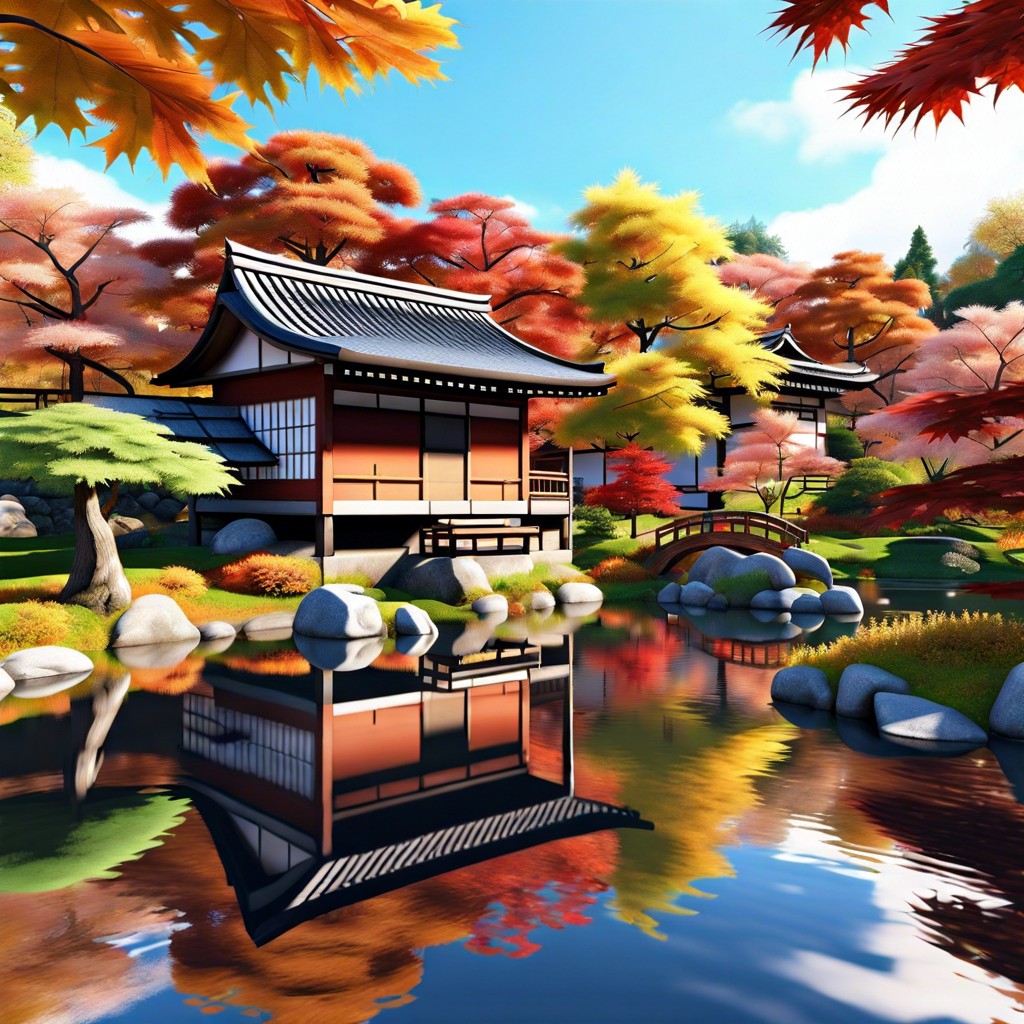
The Washitsu is a Japanese-style room typically featuring tatami flooring, paper sliding doors, and minimalist design elements creating a calm and serene atmosphere conducive to relaxation. Its layout encourages sitting on the floor and promotes a deep connection to nature and tradition.
Koi Pond
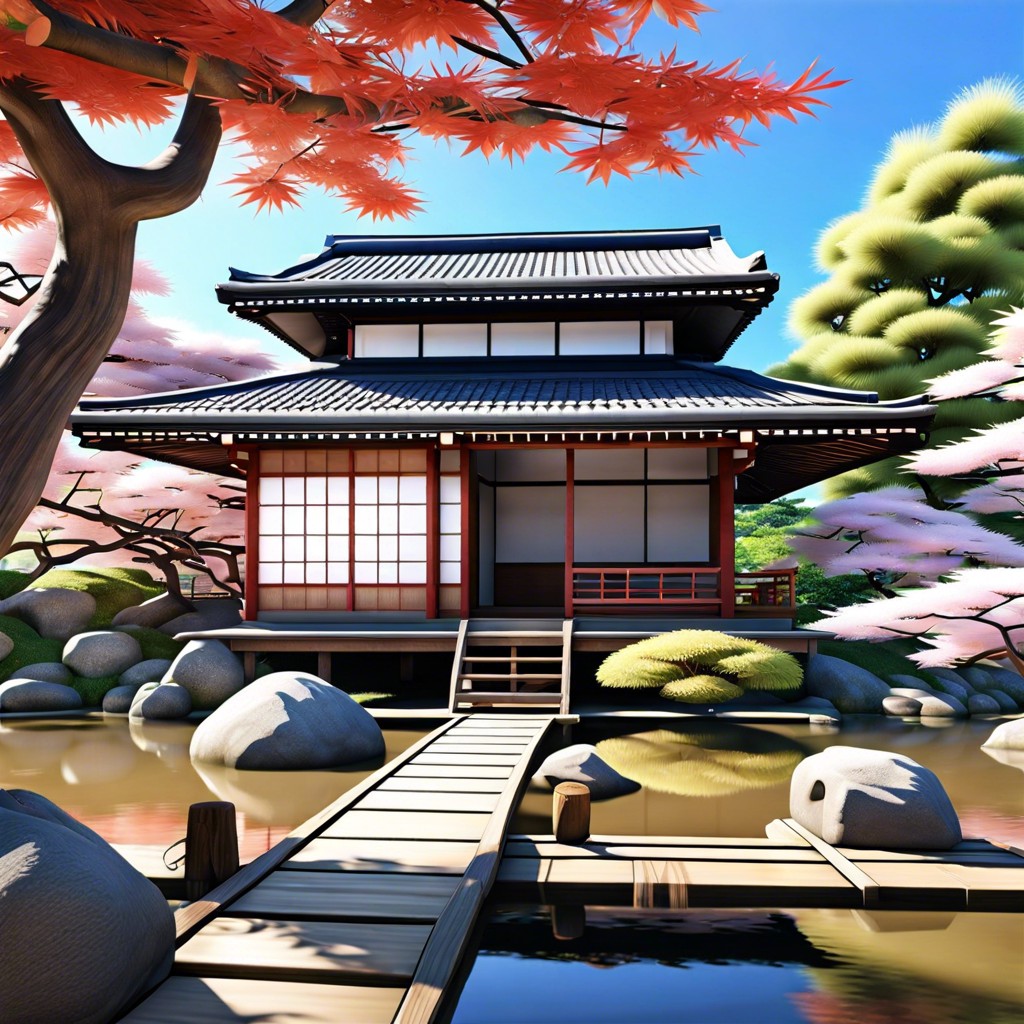
Koi ponds are serene water features commonly found in traditional Japanese houses, adding a calming ambiance to the surroundings. They often house colorful koi fish, enhancing the beauty and tranquility of the overall space.
Traditional Teahouse
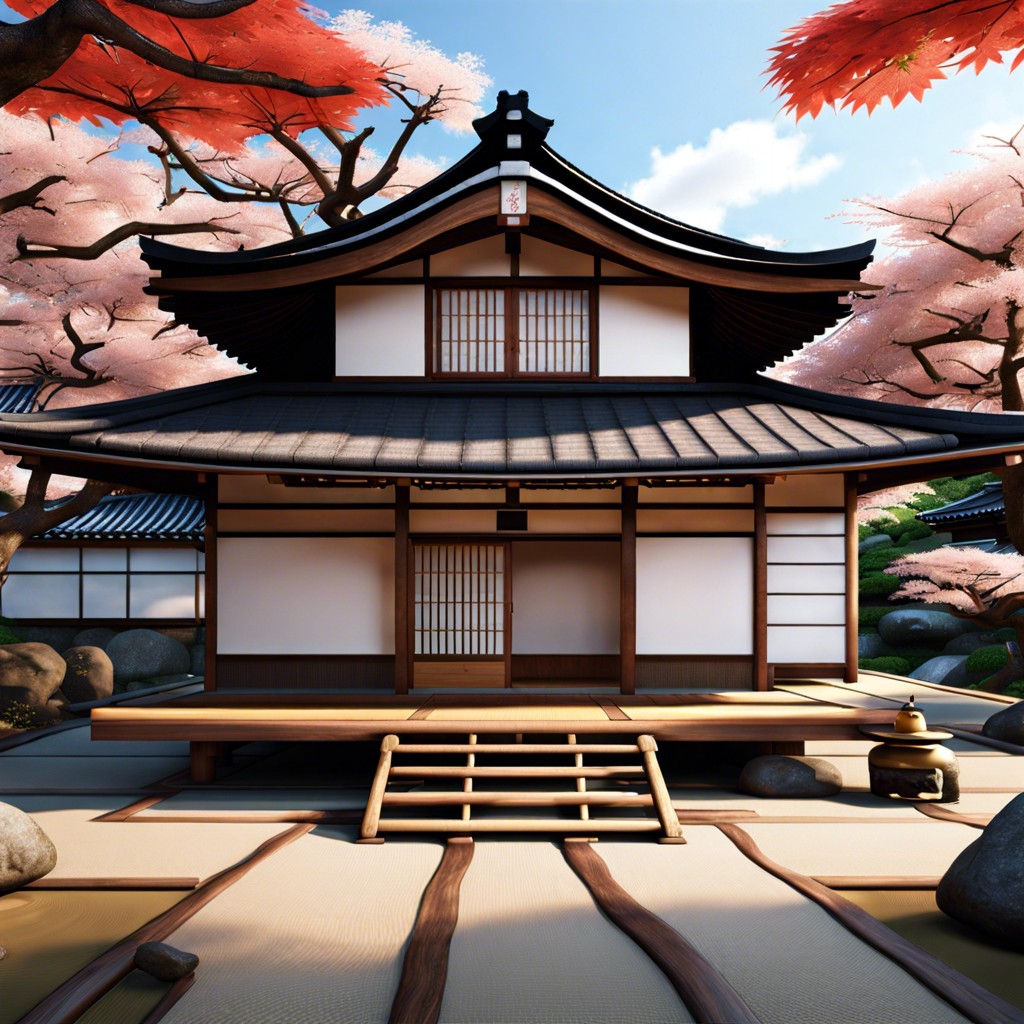
Traditional teahouses provide an authentic setting for Japanese tea ceremonies. They are designed to create a peaceful and harmonious environment for this traditional practice.
Kura (storehouse)

Kura in a traditional Japanese house is a secure storage space used for important items. It usually has thick walls and small windows for protection.
Bamboo Fencing
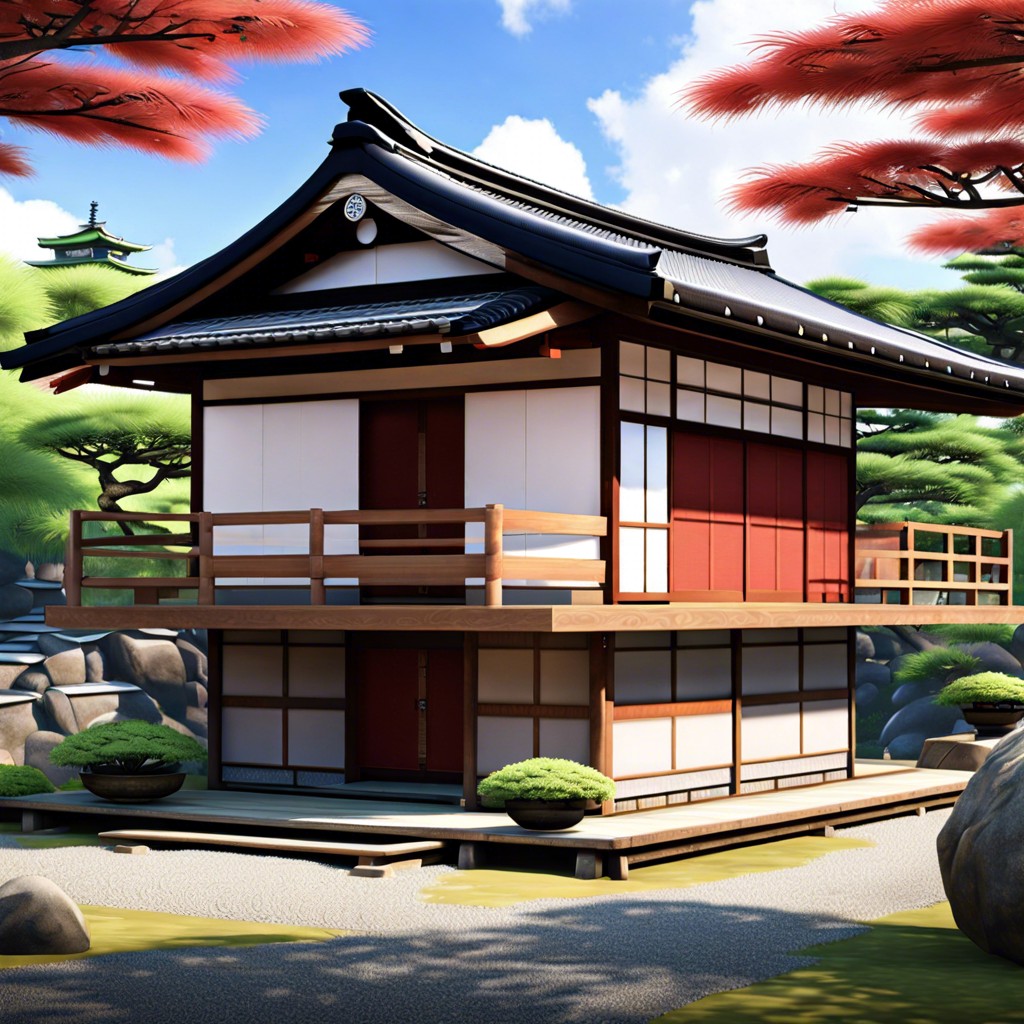
Bamboo fencing is a natural and aesthetically pleasing way to add privacy to the traditional Japanese home. It provides a touch of tranquility and blends harmoniously with the overall design of the property.
Table of Contents




